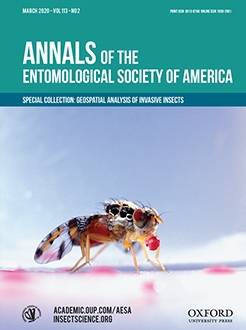CLIMEX and MED-FOES models integrate climate and data on Mediterranean fruit fly (medfly), Ceratitis capitata (Wiedemann), biology and use it to define the environmental suitability for the pest at specific geographical locations. CLIMEX calculates growth indices as indicators of conditions that are suitable for medfly population growth. MED-FOES incorporates additional information on pest management interventions to simulate the process and timing of medfly eradication. CLIMEX simulations of climatic suitability in California and Florida indicated that the most favorable periods for medfly population growth are March through May and October through November, whereas the environment would be especially stressful during the summer months, except when irrigation is applied. With irrigation, California is highly suitable for medfly population growth during the summer months. Due to cool temperatures, medfly populations are likely to decline significantly in January through February in Los Angeles, Tampa, and Miami, and probably not survive in San Francisco. According to MED-FOES simulations, it possibly would take longer to eradicate medfly from California than Florida, particularly if the incursions are initiated in the summer months. Medfly annual growth indices for the ENSO La Niña years are relatively low for San Francisco and Los Angeles but above neutral for Tampa and very high for Miami. During the El Niño phase, the growth index remains unchanged for San Francisco, increases for Los Angeles, and decreases for Tampa and Miami. CLIMEX and MED-FOES models are useful for informing plans to manage invasion threats from medfly and other invasive insects.
How to translate text using browser tools
11 February 2020
CLIMEX and MED-FOES Models for Predicting the Variability in Growth Potential and Persistence of Mediterranean Fruit Fly (Diptera:Tephritidae) Populations
Anna M. Szyniszewska,
Norman C. Leppla,
Nicholas C. Manoukis,
Travis C. Collier,
John M. Hastings,
Darren J. Kriticos,
Kevin M. Bigsby
ACCESS THE FULL ARTICLE
It is not available for individual sale.
This article is only available to subscribers.
It is not available for individual sale.
It is not available for individual sale.
Climate
CLIMEX
invasive insect species
MED-FOES
Mediterranean fruit fly






